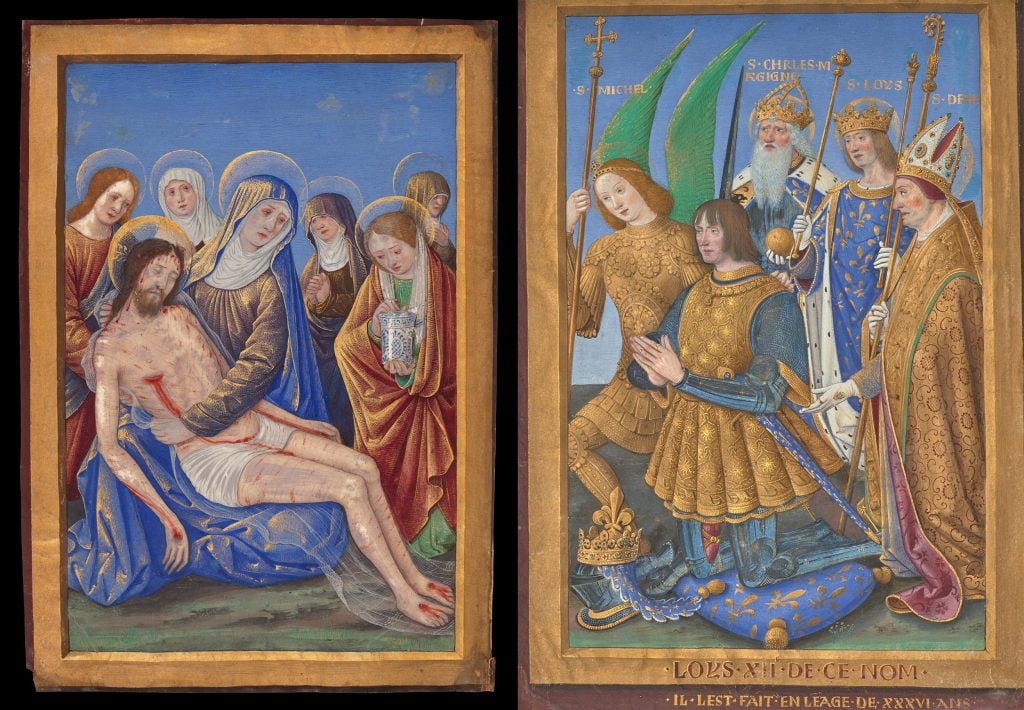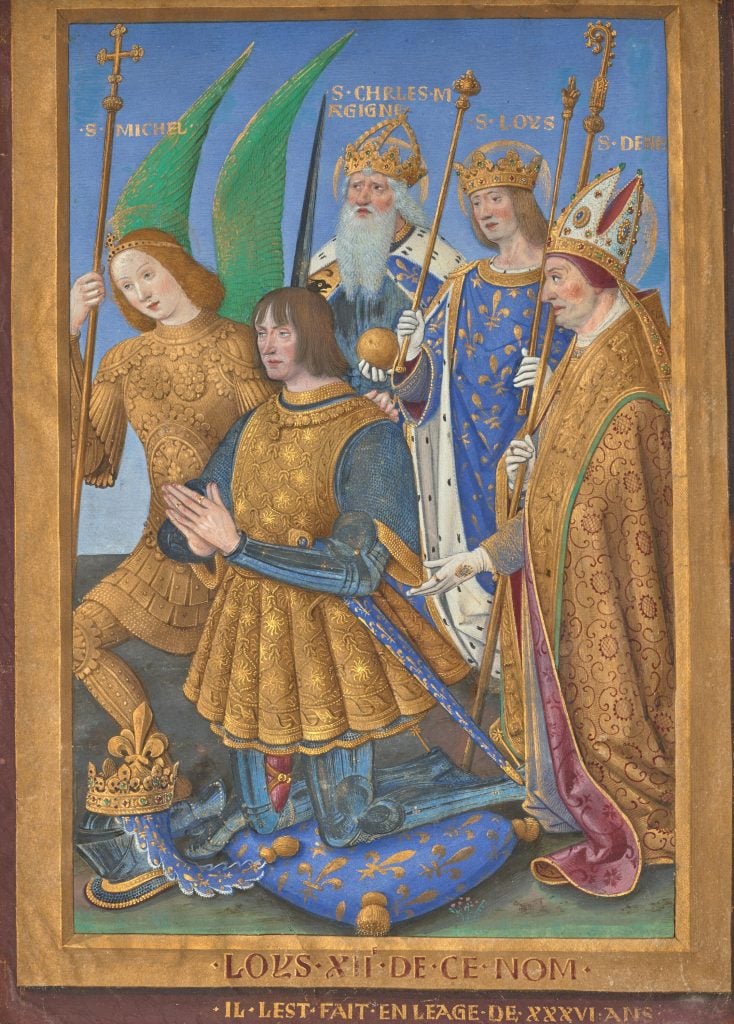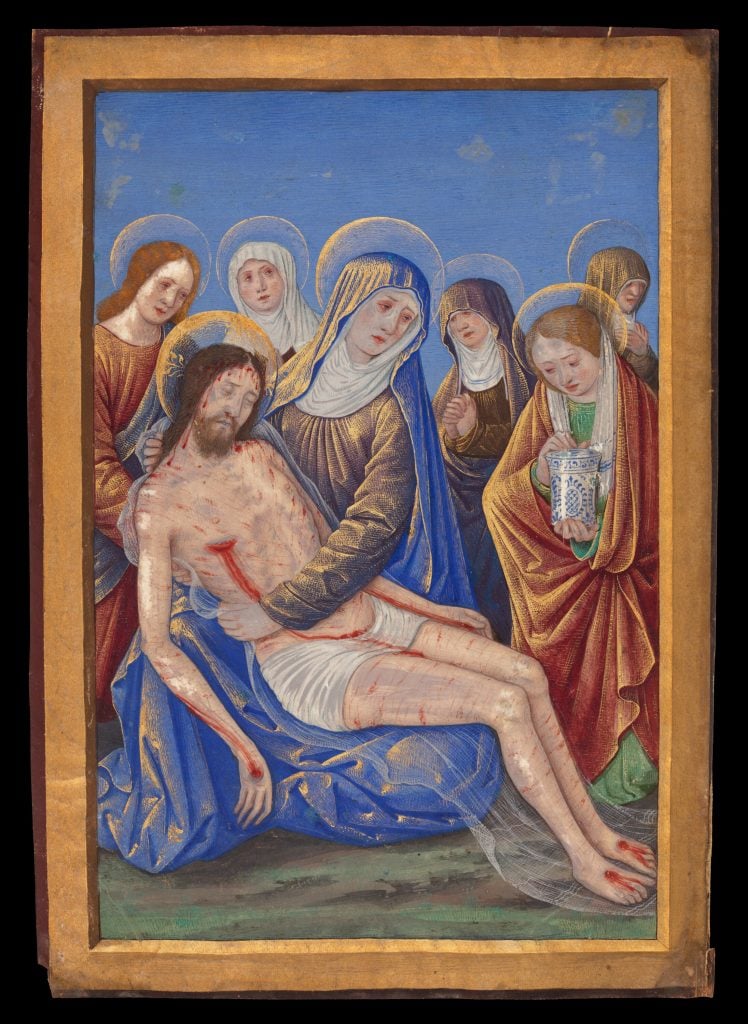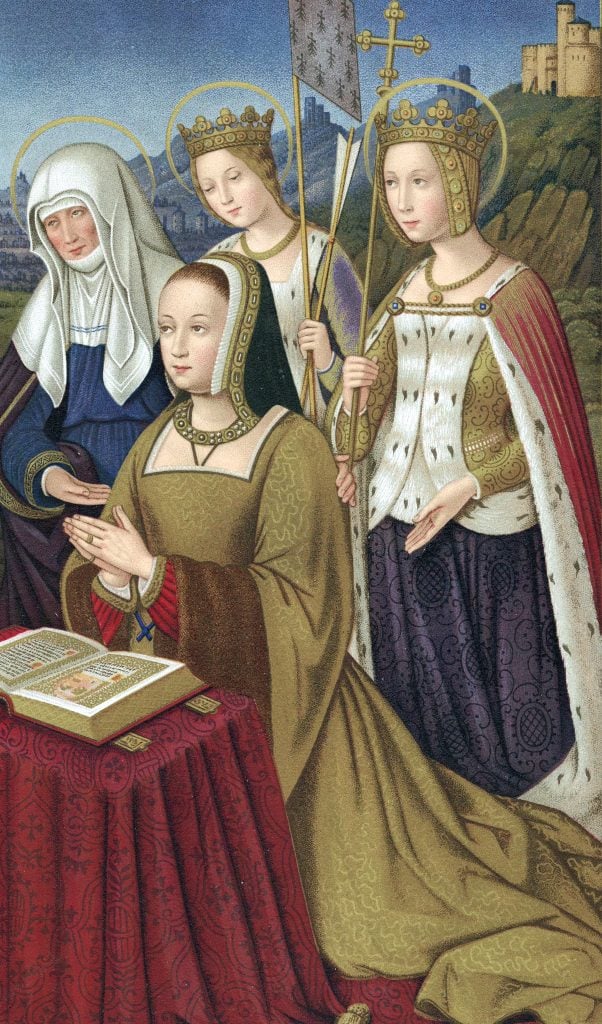Art World
Two Halves of a Medieval Manuscript Page Are Reunited After More Than a Century
The images are from the manuscript the Hours of Louis XII, which was broken up and dispersed in the 17th century.

In 2003, when the Getty Museum acquired three images from the 15th-century manuscript Hours of Louis XII, its curators had a hunch that one of the pictures was incomplete. Their suspicions made sense: the panel portrays the titular king, kneeling while surrounded by four saints, their gazes fixed on something at the left, which was frustratingly missing.
But now, two decades on, the museum has finally located the other half of the diptych. “It felt like an actual unicorn was led into my office,” said Elizabeth Morrison, Getty’s senior curator of manuscripts.
Compiled around 1498 for the king, the Hours of Louis XII was a large, illuminated prayer book created by long-time court painter Jean Bourdichon. Around 1700, the manuscript ended up in England, where it was pulled apart, its pages dispersed to various collections. Today, only 16 miniatures from the book are known to survive; fragments of it are preserved at the British Library and V&A Museum in London, the Free Library of Philadelphia, and the Louvre in Paris, among other institutions.
The three miniatures in the Getty’s collection are The Presentation in the Temple, Bathsheba Bathing, and Louis XII of France Kneeling in Prayer, Accompanied by Saints Michael, Charlemagne, Louis, and Denis, all acquired from different sources.

Jean Bourdichon, Louis XII of France Kneeling in Prayer, Accompanied by Saints Michael, Charlemagne, Louis, and Denis, from Hours of Louis XII (1498–99). Photo courtesy of Getty Center.
According to the museum, by the 18th century, the image of a kneeling Louis XII and its missing counterpart were owned by art collector William Beckford. When they were sold upon his death in 1848, a report of the sale noted that the illustration of the French king was paired with an image of a “virgin and child.” What became of that part of the picture, whatever it depicted, is unknown.
That is, until 2018, when the long-lost leaf turned up at an auction in France. Dealer Sandra Hindman stumbled across the lot and sensed it was by Bourdichon’s hand. She was right: the illumination would be authenticated by art historian Nicholas Herman, who determined it was the missing half of the diptych, which likely graced the frontispiece of the Hours of Louis XII.
Hindman immediately alerted Morrison. “You’re going to be really excited about this,” she told the curator.

Jean Bourdichon, The Lamentation, from Hours of Louis XII (1498–99). Photo courtesy of Getty Center.
The missing half, titled The Lamentation, depicts Mary clutching the bleeding body of Christ, her companions bowing their heads in mourning. The Getty described the work as epitomizing Bourdichon’s attention to detail and emotional intensity—in effect “impart[ing] the sense of a monumental panel painting.”
Its connection to Louis XII of France Kneeling in Prayer was also apparent. Bourdichon used similar colors across both panels; the gaze of the king and his patron saints align with the image of Christ. The diptych further recalls the painter’s earlier image of Anne of Brittany, in which the French queen is likewise shown kneeling in prayer in a panel facing a depiction of the Lamentation of Christ.

A miniature from Heures d’Anne de Bretagne by Jean Bourdichon. Photo: Ann Ronan Pictures/Print Collector/Getty Images.
Once the images were reunited, Morrison uncovered even more links between them. The gold painted frame around the Louis XII work was lopped off at the top, it appeared, in order to make it the same size as Lamentation. The height of both pages when framed would thus be the same.
“We had always wondered, ‘Why wouldn’t you cut it along the top edge of the frame?’” said Morrison. “Well, it was probably because someone cut down the Lamentation page first and then realized they’d made a mistake and wanted the two sides to be the same height, so they had to cut through the frame on the top of the right side to preserve the text on the bottom of the page with Louis XII.”
The Getty Center, which has since acquired Lamentation, will present the reunited diptych next February.
“It’s sort of this mythical thing that I just never thought would actually materialize,” Morrison said of the discovery. “It’s always a totally random string of events that leads to a manuscript page being rediscovered, because they’re out there. We just don’t know where they are.”





